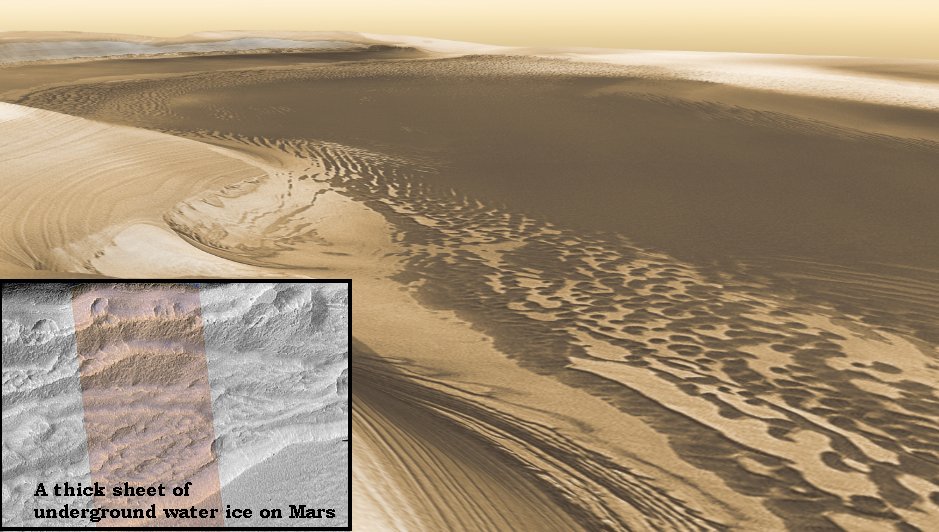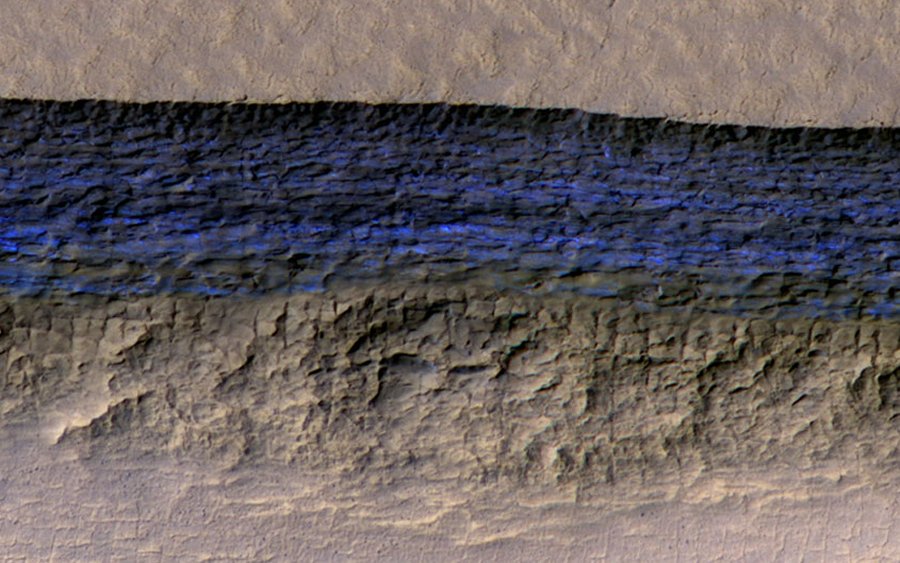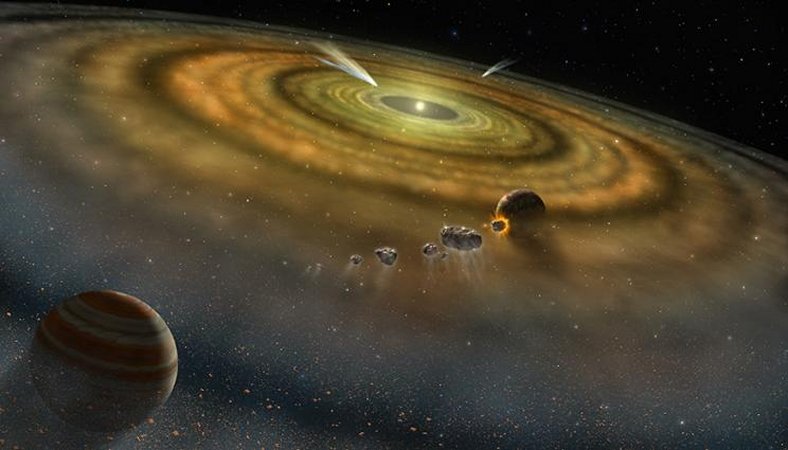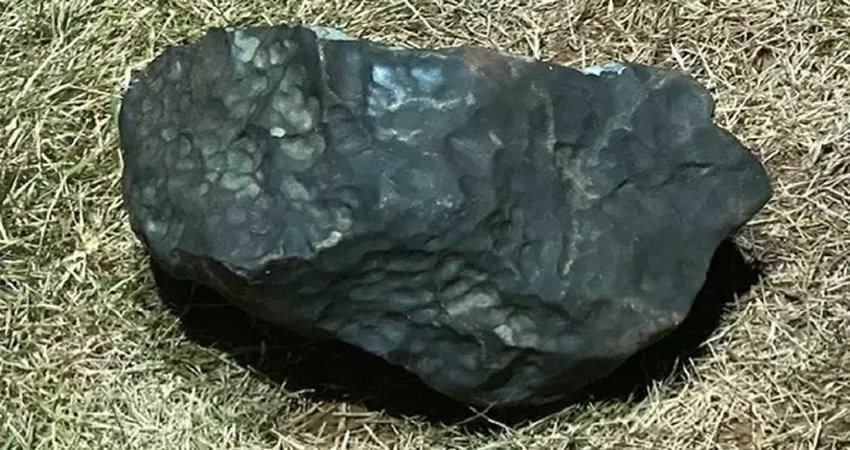Massive Deposits Of Ice Only A Few Feet Under Mars’ Surface – Discovered
MessageToEagle.com – Analyzing images captured by the HiRISE instrument on NASA’s Mars Reconnaissance Orbiter Mars, researchers found eight locations of massive, thick ice deposits beneath Mars’ surface.
The deposits are located only a few feet under Mars’ surface but go deep down more than 100 yd (300 feet) in certain places.

The eight scarps are located in both northern and southern hemispheres of Mars, at latitudes from about 55 to 58 degrees, equivalent on Earth to Scotland or the tip of South America.
They reveal new important information about the composition of underground ice deposits, their structure and thickness.
The ice was likely deposited as snow long ago. Interestingly, the deposits contain rather pure ice within just a few feet of Mars’ surface, so they make frozen water more accessible than previously thought to future robotic or human exploration missions.

“There is shallow ground ice under roughly a third of the Martian surface, which records the recent history of Mars,” said the study’s lead author, Colin Dundas of the U.S. Geological Survey’s Astrogeology Science Center in Flagstaff, Arizona.
“What we’ve seen here are cross-sections through the ice that give us a 3-D view with more detail than ever before.”
This research benefited from coordinated use of multiple instruments on Mars orbiters, plus the longevities at Mars now exceeding 11 years for MRO and 16 years for Odyssey. Orbital observations will continue, but future missions to the surface could seek additional information.
Original story – here.
MessageToEagle.com










